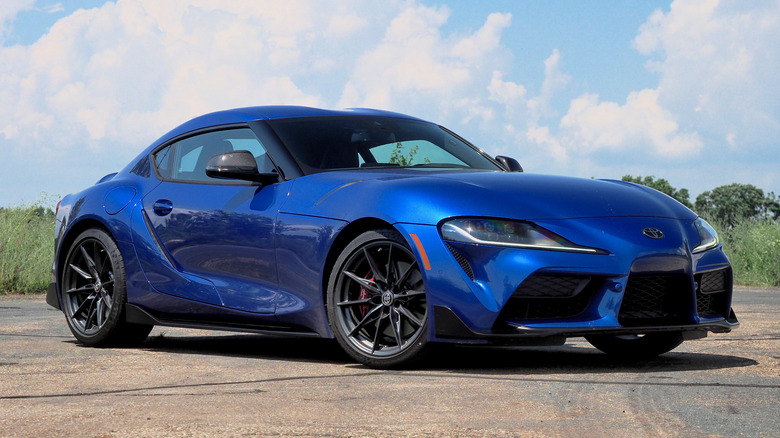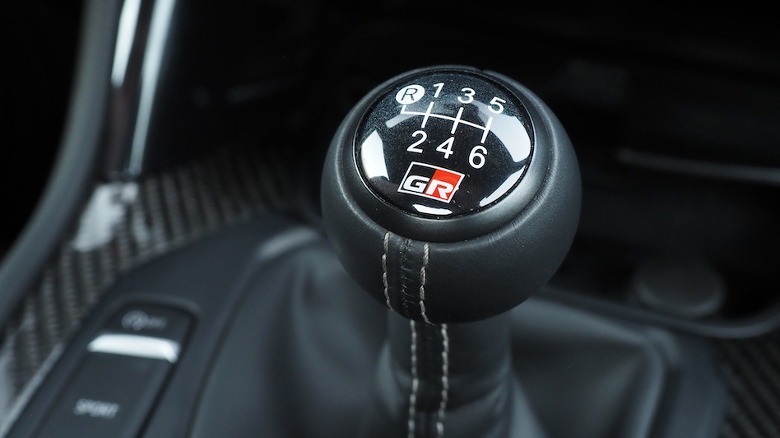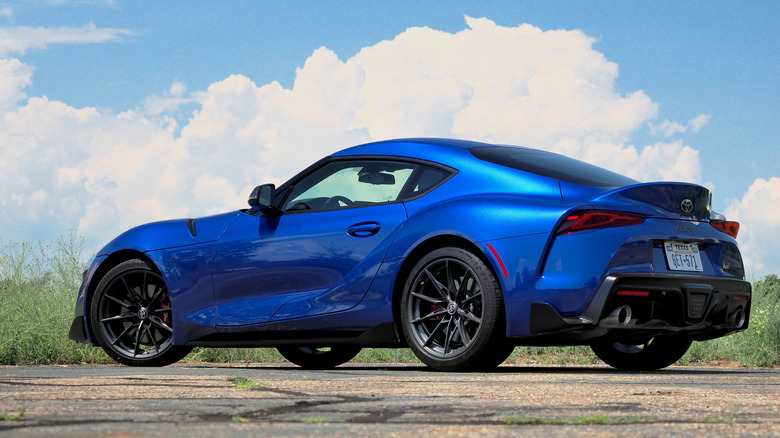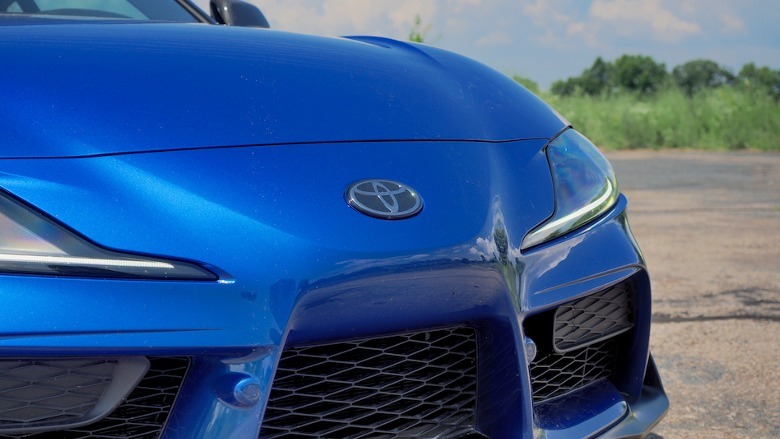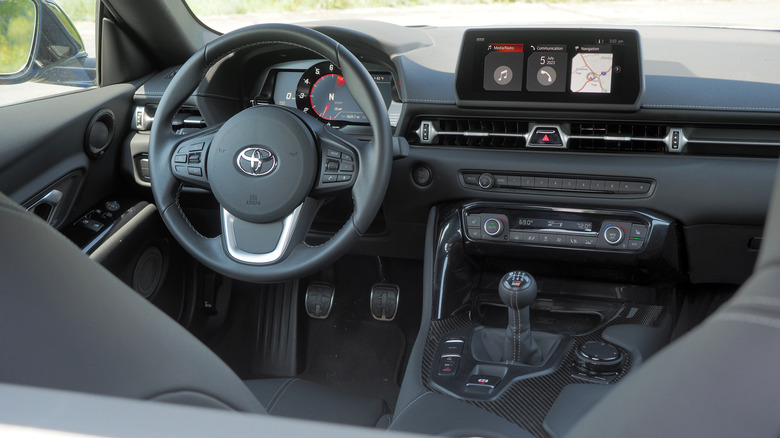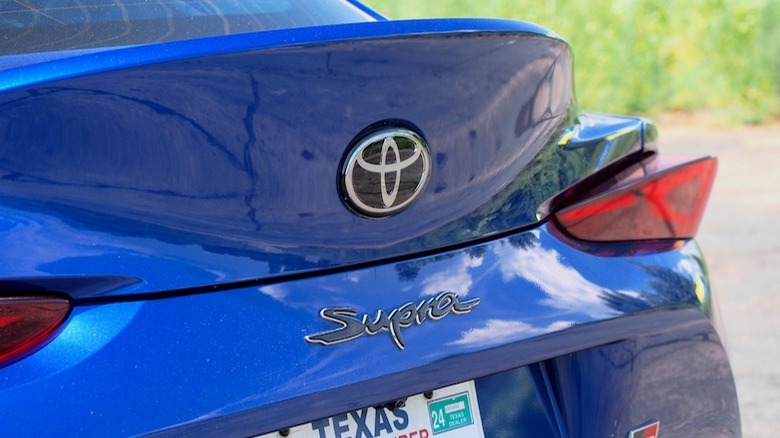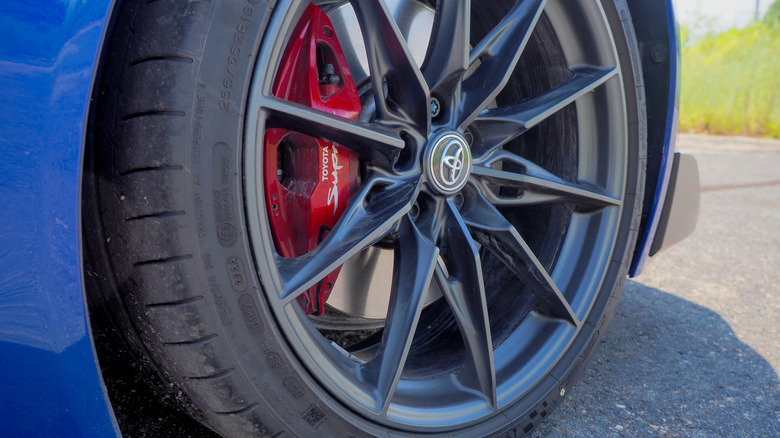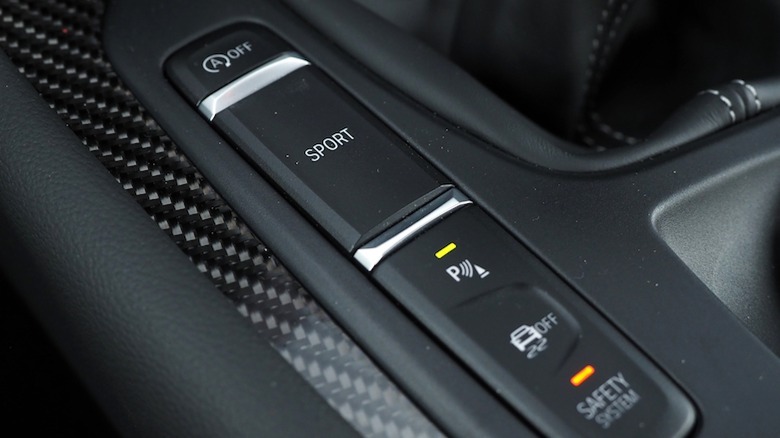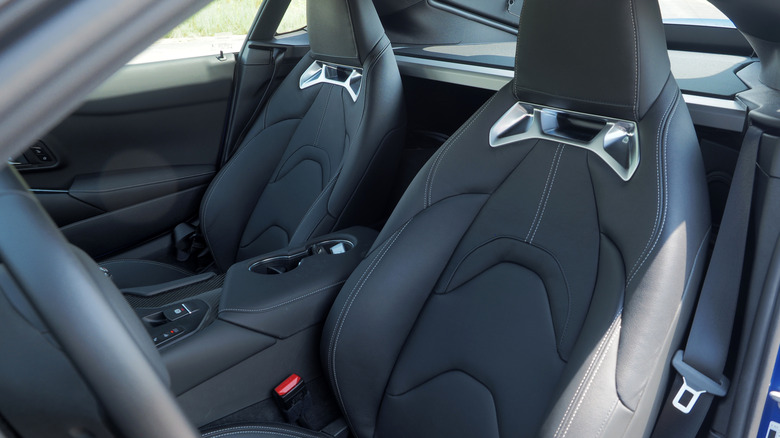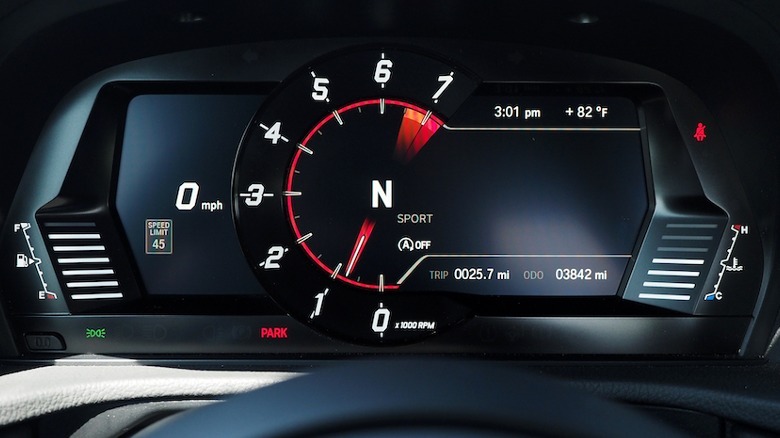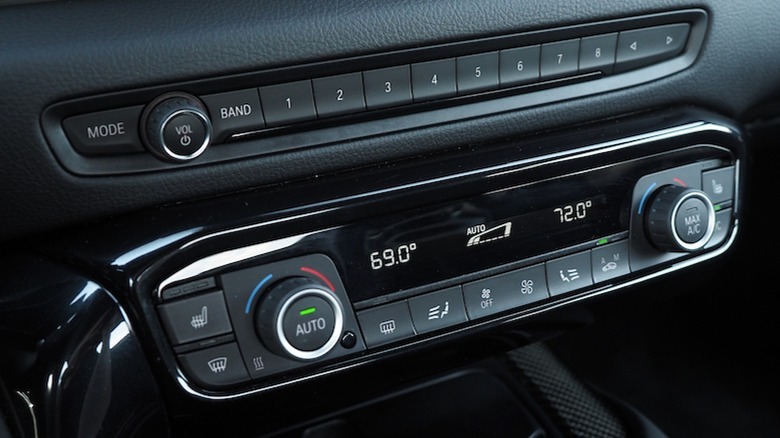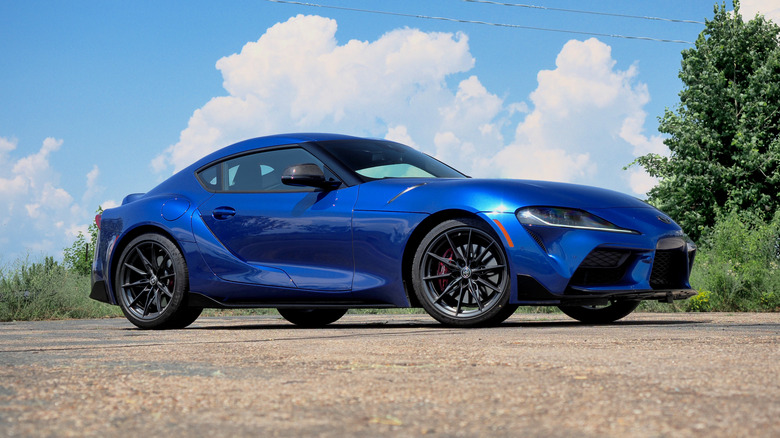2023 Toyota GR Supra 3.0 Manual Review: Imperfect But Appealing
- Manual transmission is a welcome option for enthusiasts
- Distinctive styling still turns heads
- Punchy engine is fast and rewarding
- Snug cabin feels more like a BMW
- Tail-happy tendencies are easy to provoke
- Fuel economy takes a hit versus automatic
Despite what the sports car industry might tell you, the metric of success isn't horsepower, or speed, or even acceleration, but how you feel. Little illustrates that fact better than the perennial appeal of the manual transmission, and few cars in recent memory have been met with so many demands for a stick shift option as the Toyota GR Supra. For 2023, the automaker relented.
These days, you don't pick a manual for outright performance. Long gone is the time when lazy, slow-shifting automatic transmissions meant a straight-line penalty in return for their convenience. If zero to 60 mph is your metric for success, reality is that the Supra 3.0 with the 8-speed auto will run it in a quoted 3.9 seconds, while even the fastest human hand on the stick will take 4.2 seconds.
Three-tenths of a second is barely anything, but it's also a reminder that the joys of rowing your own gearbox are far more esoteric. After all, whether it takes you 3.9 seconds or 4.2 seconds, on most roads you'll struggle to hit 60 mph without breaking the law in the process. Highways are hardly the ideal test ground for repeated speed trials.
It's a fact of life that, though ridiculous performance is now within affordable reach of a huge cohort of drivers, the opportunities to (safely, legally) revel in straight line speed are fairly limited. A stick shift gives you the opportunity to at least be more involved in the process toward whatever that speed limit might be, rather than simply burying your right foot and holding on for dear life.
A no-cost option on a divisive coupe
The Supra line-up starts out at $44,640 (plus $1,095 destination) but manual GR Supra ownership costs at least $53,600 (plus destination); Toyota has opted not to charge a premium over the automatic. It comes in regular 3.0, 3.0 Premium, and — assuming you can find one still in stock — a limited-edition A91-MT configuration. At that point, you're pushing up against the $60k mark.
The Supra's design continues to divide, probably because of that distinctive snout. Toyota's mono-nostril is an acquired taste, but I find the coupe's excess of grilles — many of which aren't functional — to be dating more rapidly. The shapely front fenders would look so much better without the gill-like plastic inserts.
From the side and the rear, it's far more successful. Toyota's long prow and shoved-back cabin echo a classic two-door silhouette, while the curvaceous trunk and cursive-squirl taillamp clusters are memorable in the best possible way. I'm a fan of the 19-inch gunmetal forged alloy wheels, too, which pick up on hints of the paint color of this particular Stratosphere Blue car.
Stick isn't automatically better
I like manuals, but I'm picky. Maybe it's from growing up across the pond — and leaning to drive there — where stick shifts aren't some enthusiast rarity, but the cheapest option for automakers. Transmissions that change themselves are more commonplace in Europe, now, but I still get the feeling sometimes that fans of manual gearboxes should be more specific with their demands to "save" them.
The good news is that the GR Supra's manual gearbox is pretty darn good. Handiwork of ZF — which also makes the 8-speed auto — it'll do automatic rev-matching to take at least a little of the driving-fast drama out of your right hand and left foot. It snicks between ratios neatly, the clutch nicely weighted and easy to modulate (though an auto-brake-hold feature would be swell, Toyota, please).
Could the throw be a little shorter? Sure, and at the end of the day I don't think this eclipses my perennial favorite manual, the 6-speed in the Mazda MX-5 Miata. Nonetheless, it's a lot more engaging and just plain fun compared to the Supra's auto.
Still tail-happy
All 3.0-liter Supra models now come with the active rear sport differential, and Toyota has tweaked the shocks and suspension too. The latter are difficult to observe in practice; the former is a reminder that this generation of Supra has always been a tail-happy thing. If you want to provoke the rear, it's really not difficult. Nor, happily, is bringing it back in line again.
There's a single "Sport" mode button, which most noticeably leaves the gas pedal more aggressive. Next to that is the button to switch off the traction control. Generally, the Supra is poised and easy to drive. There's no shortage of midrange torque in third or fourth gear; if you'd prefer to just gas things up a little more, downshifts aren't always required.
You can only get the manual transmission with the 3.0-liter inline-six. That brings a happy, healthy 382 horsepower and 368 lb-ft of torque to play. It's a smooth engine and more than up to the task of propelling the GR Supra along with alacrity. Weight balance overall is actually a little better with the smaller, 2.0-liter engine, though, and the economy delta gapes even wider. In the 3.0 manual, you're looking at 19 mpg in the city, 27 mpg on the highway, and 21 mpg combined; the 3.0 automatic does 23 mpg city, 31 mpg highway, and 26 mpg combined, and the 2.0-liter is even more frugal.
Familiar cabin foibles
What comes standard with either engine, and both transmissions, is a very snug interior. You'd never guess the Supra's BMW heritage, right up until the point you climb inside. Then, the dashboard will be familiar to anybody who has spent time in Munich's finest. Those who aren't so familiar will have time to get that way, as the tight cabin wraps around you.
It's a two-seater, you'll be unsurprised to hear, but it's a compact two-seater at that. Enough that you start to wonder whether you might've clambered into a GR 86 instead; enough that questions as to whether you'll be able to elegantly extricate yourself again become pressingly meaningful.
Look beyond the lack of space, and while it may not chime with the rest of Toyota's portfolio, frankly I'd rather have the Supra's driver-centric cabin than, say, that of a Prius or Tundra. The digital gauge cluster is crisp and not visually overloaded; the Premium trim gets a sizable color head-up display. While the 8.8-inch infotainment touchscreen feels on the small side — and its UI is clearly reskinned BMW tech — it's also easy to use. There's wireless Apple CarPlay support, and a wireless phone charger with a handy grip to keep your iPhone snug against the pad.
2023 Toyota GR Supra 3.0 Manual Verdict
There are lots of good reasons to go for an automatic transmission. If the GR Supra is your everyday car, the one you'll be commuting in, running every errand in, and maybe even dropping off kids at school in, then skipping the stick and going for something more convenient undoubtedly has appeal. At the end of the day, this is your $54k+ sports car, and you're the one who has to live with it.
Nonetheless, the fact that we now have a choice is a welcome evolution for the Supra, and indeed a welcome trend for Toyota in general. The fact that manual-lovers have options in this, the GR Corolla, and the GR 86 is a big deal, given the trends at automakers elsewhere. I could probably make some sort of wry observation about it being ironic that the company responsible for the Prius is also helping champion manual transmissions, but then again the new Prius has morphed into something of a sex symbol, too.
Sales of manual Supras probably aren't going to be vast. Then again, sales of enthusiast sports cars aren't typically vast anyway. What matters is, when you're spending money on an emotional purchase, getting the right car for you. The 2023 GR Supra 3.0 Manual makes that easier to do, and — whether you're a stick-lover or not — if you call yourself a car fan then it's something you should be celebrating.
